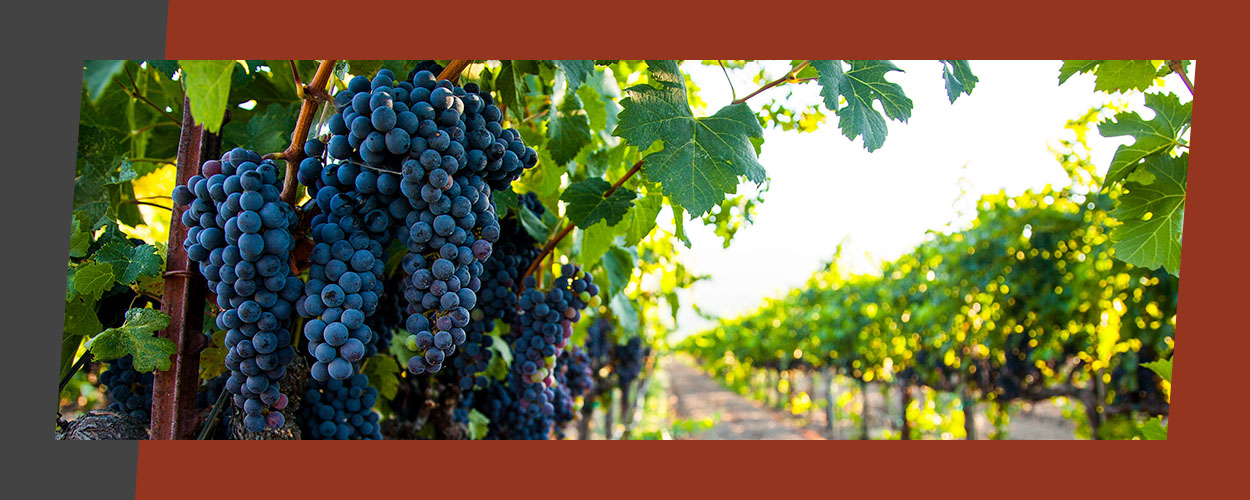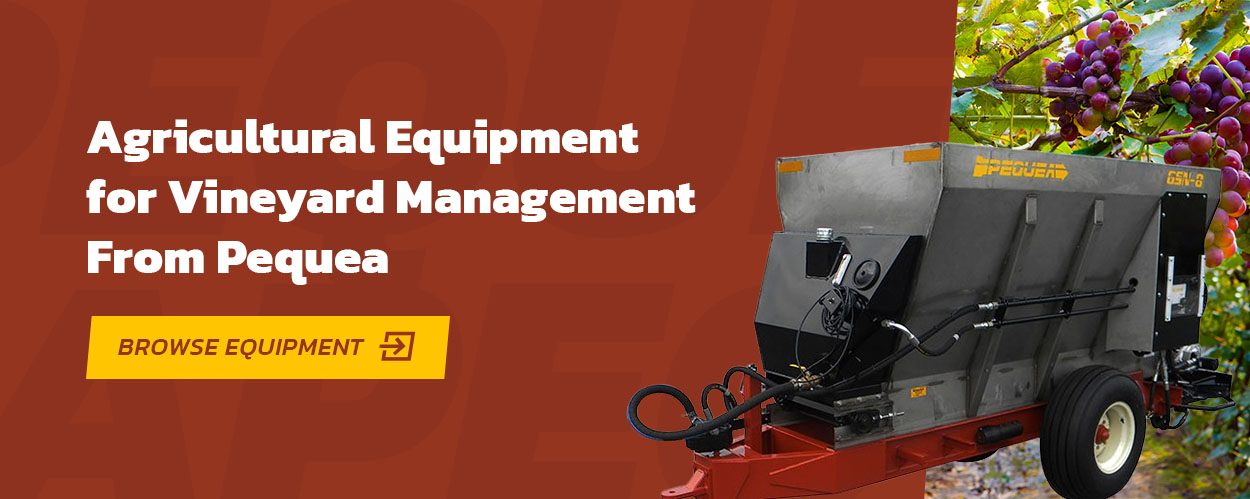How Vineyards Grow their Grapes
Vineyards are amazingly versatile. They bring us our favorite bottles of wine and supply us with delectable fruit, raisins, juices and jam that add a sweet and tart pop to various dishes and desserts. Grape growing and wine production significantly impact the North American economy, with the United States wine industry generating $276 billion.
A great deal of care and consideration goes into how vineyards grow their grapes, from choosing the right varieties to understanding planting and pruning techniques to knowing which equipment and fertilizer you need. With the right insights, growing grapes is a satisfying — and fruitful — endeavor!
Common Grape Varieties
There are more than 10,000 grape varieties farmers grow in different climates across the globe, with over 1,000 varieties used for making wine. The benefit of having this many different grapes to choose from is that you can produce a range of wine varieties with unique characteristics. Some common grape varieties used in winemaking include:
- Cabernet Sauvignon: A popular vine for California and Washington, this black grape variety produces wines rich in tannins and notes of cherry, plum and tobacco.
- Merlot: Merlot is a popular wine variety that often features as the main grape in wine blends because of its softer taste and fruity notes.
- Chardonnay: Chardonnay is a white grape that grows well in a variety of climates. Its taste can vary depending on the growing temperature and aging methods.
- Pinot Noir: Pinot noir is one of the most popular grape varieties in the world. This grape variety has thin skin and grows in beautiful purple round clumps. It is an excellent variety for producing wine, thanks to its rich, complex flavor profile — earthiness, cherries, berries and even hints of caramel and roses.
- Riesling: Riesling is a versatile grape variety that balances nicely. It can be used to produce both sweet and dry wines or for making non-alcoholic grape juice.
Choosing the Right Variety
There are abundant grapes for wine production, but naturally, you want to choose the right variety for your vineyard. Factors to consider when selecting grape varieties include:
- Climate and regional considerations: Different grape varieties thrive in various climates. Choosing a variety that is suited to your climate is one of the foundations for a successful harvest.
- Flavor profile and diversity: Consider the flavor profile you want your wine to embody. Do you want to produce dry and sweet wines? Temperature and soil can impact a wine's flavor, so take that into account.
- Experience: Some grapes are simply easier to grow than others. Pinot noir, for example, is challenging to cultivate. It can be a fickle variety that requires high levels of care and specific conditions to thrive.
Vineyard Management and Practices
Managing a vineyard is a true labor of love. Grapevines typically only mature in their third year after planting. Still, from when you plant vines to harvesting, your grapes require pruning, nutrition and fertilization, irrigation management, protecting your vines, canopy management and more.
Planting, Pruning and Training
Spring is one of the best times to plant grapevines. Planting in springs allows enough time for the vine to establish its roots before winter kicks in. You may get your vines from a nursery or online catalog. When you do, remove any damaged roots and soak them in water for a day before planting them.
To plant vines, dig holes that are a few inches deeper than the roots and plant each vine around eight feet apart. While the grapes are still young, you may install a trellis system to help support the vines as they grow.
Training, which involves pruning vines and utilizing trellising for how the grapes will grow, is essential for keeping vineyards under control and producing a maximum yield of quality fruit. Without pruning, vines produce far more fruit than they can ripen yearly. This takes from essential space, nutrients and water that would otherwise go to producing the best harvest.
Various training systems are available for different grape varieties, and the process may also look different depending on the vines' age and whether they are dormant or in the growing season.
Grape cultivation and harvest only begin once grapes are mature and fully ripe. Handpicking, a traditional method, is the standard route for harvesting wine grapes, though it is certainly a long and involved process.
Fertilization Methods
Fertilizer for your grape's soil is another intricate part of maintaining vineyards. Grapes do not need much fertilizer when they are well-established. In fact, too much fertilizer can cause excessive leaf and wood growth that hinders the fruit from growing.
However, it is still important to fertilize your soil at planting time, in early spring, as new growth emerges and after harvesting, when vineyards are most depleted.
Some evidence suggests that combining organic and inorganic fertilizers is the most practical and beneficial route to take for grapes. Another important factor is the composition of the fertilizers you should use, which can best be determined by analyzing your soil's pH level to discover what your soil needs most.
A pH level of 5.5 to 6.5 is best for producing a good grape harvest, depending on the variety of grapes. If the pH level of your soil is too low, you may add dolomitic limestone, and if it is too high, you could add sulfur to the fertilizer. You may also determine that your soil needs more nitrogen, magnesium, phosphorous or potassium to sustain your vineyard.
The Benefits of Fertilizer Spreaders
How you apply fertilizer to your vineyard's soil can be as significant as the fertilizer you use. Investing in a fertilizer spreader is an excellent way of optimizing and streamlining your operations. The benefits of using a fertilizer include:
- Boosting production yield: Manually spraying your fertilizer may affect the distribution of the fertilizer and negatively affect your soil health. Fertilizer spreaders evenly distribute the fertilizer, which can positively contribute to a better production yield.
- Automating your processes: Automating your processes with agricultural equipment like fertilizer spreaders can help you save time and money spent manually fertilizing your vineyard.
- Improving accuracy: Too little or too much fertilizer impacts your soil's pH levels and overall health. Adding a fertilizer spreader to your agricultural arsenal helps you eliminate some of the guesswork.
Investing in a quality fertilizer spreader that will serve your vineyard well is key. At Pequea, we have a variety of premium fertilizer spreaders that suit orchards and vineyards of various sizes. Our spreaders have a narrow profile that makes navigating between your vineyard's rows easy. Our models also feature large-capacity hoppers that increase the time between refills.
Agricultural Equipment for Vineyard Management From Pequea
As a vineyard operator, having the right techniques, equipment and fertilizer for your vineyards is crucial for a fruitful harvest of quality grapes. At Pequea, we aim to empower farmers and others in the agricultural sector with a premium selection of agricultural equipment, including our various models of fertilizer spreaders, that can help optimize your operations.
With our fertilizer spreaders, you enjoy greater operational convenience and increased control over managing your vineyard's spreading needs. Browse our agricultural equipment or contact us today to find a dealer near you!


